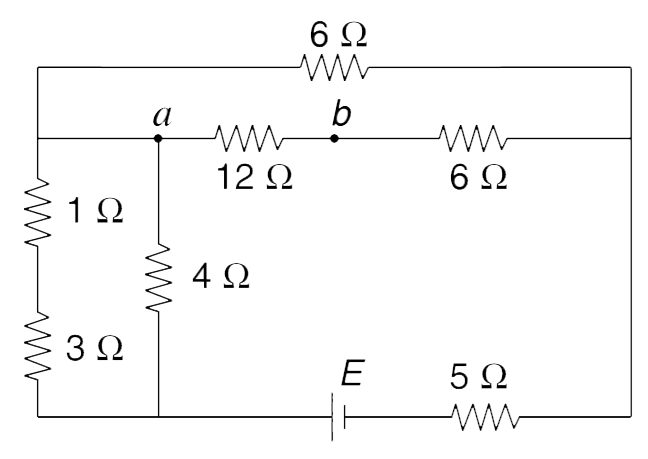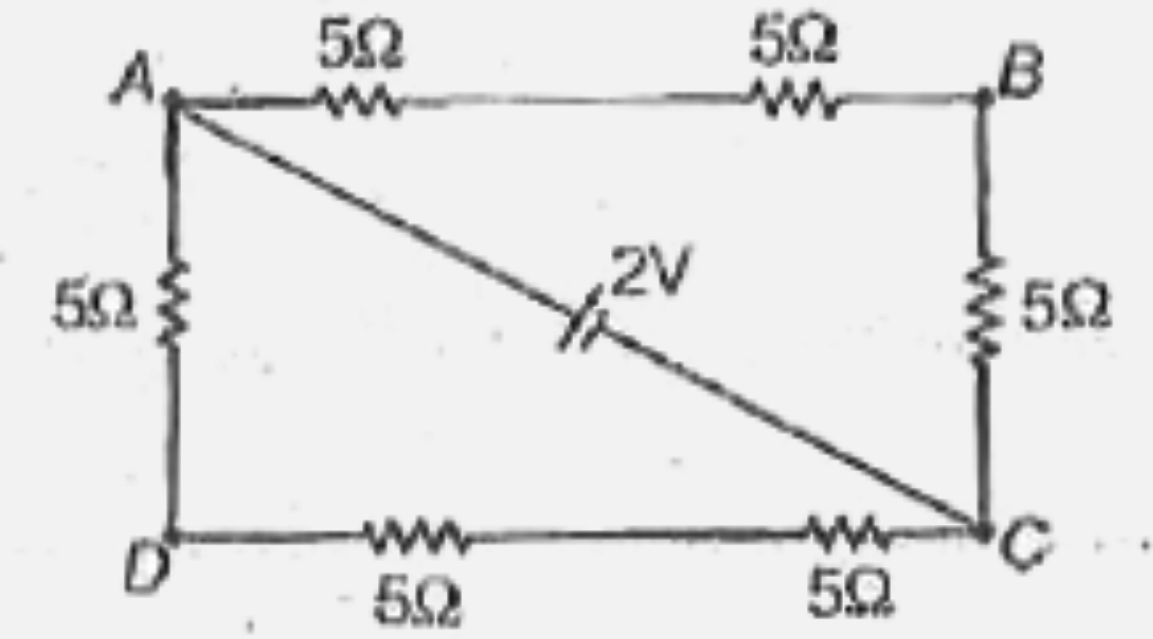For the circuit given in figure, find the potential difference between points a and b. 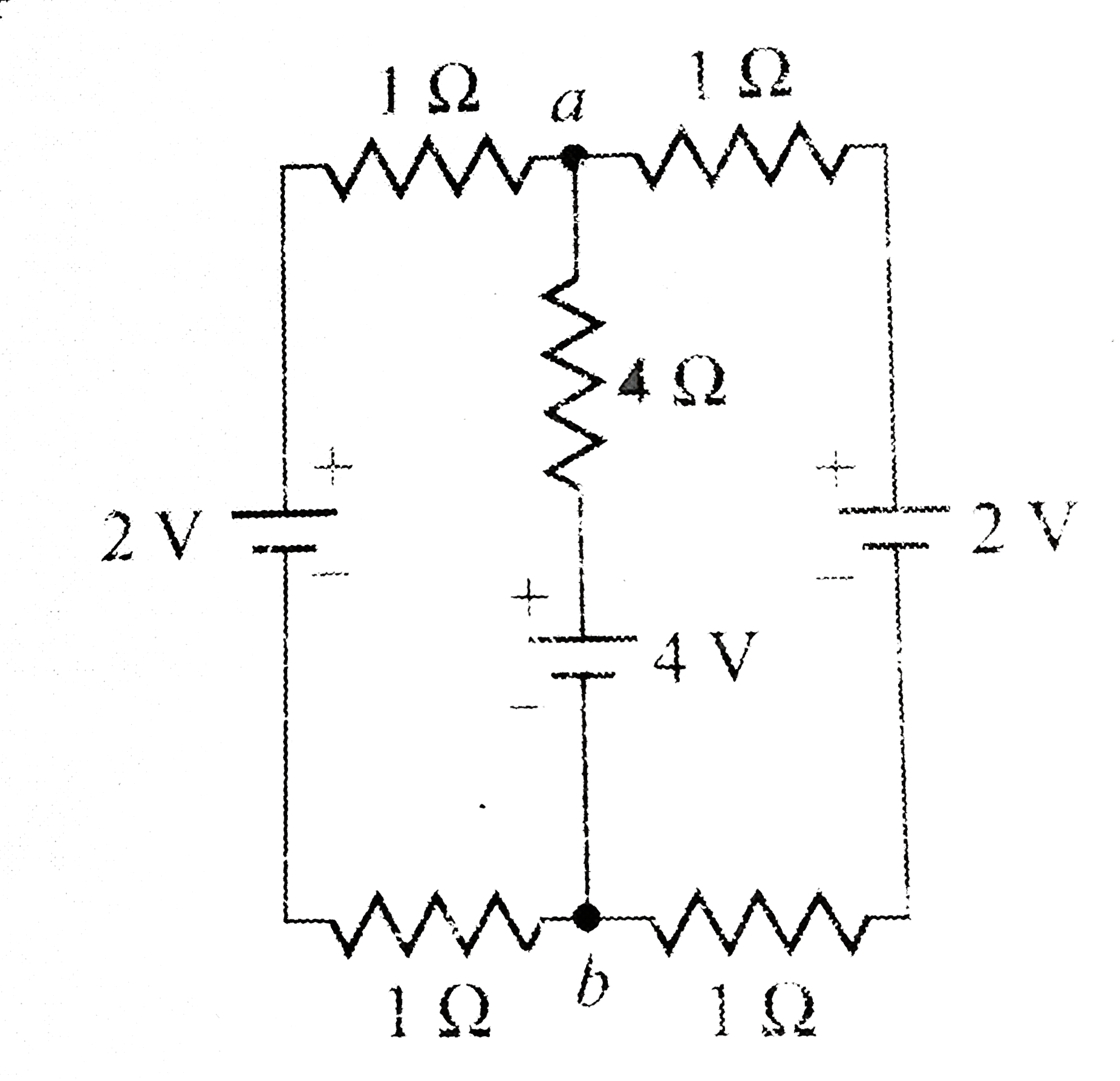
A
2.4V
B
6V
C
10V
D
4.8V
Video Solution
Text Solution
The correct Answer is:A
Applying Kirchhoff's law in any branch we get
4−4(2i)−i−2−I=0ori=0.2A

Va−Vb=4−(2i)=4−4(0.4)=2.4V
|
Updated on:21/07/2023
Topper's Solved these Questions
- BOOK - CENGAGE PHYSICSCHAPTER - ELECTRIC CURRENT AND CIRCUITEXERCISE - Subjective29videos
ELECTRIC CURRENT AND CIRCUIT
- BOOK - CENGAGE PHYSICSCHAPTER - ELECTRIC CURRENT AND CIRCUITEXERCISE - Single Correct72videos
ELECTRIC CURRENT AND CIRCUIT
- BOOK - CENGAGE PHYSICSCHAPTER - ELECTRIC CURRENT AND CIRCUITEXERCISE - Exercise 5.128videos
ELECTRIC CURRENT AND CIRCUIT
- BOOK - CENGAGE PHYSICSCHAPTER - ELECTRIC CURRENT & CIRCUITSEXERCISE - Kirchhoff s law and simple circuits15videos
ELECTRIC CURRENT & CIRCUITS
- BOOK - CENGAGE PHYSICSCHAPTER - ELECTRIC FLUX AND GAUSS LAWEXERCISE - MCQ s38videos
ELECTRIC FLUX AND GAUSS LAW
Similar Questions
Knowledge Check
- Question 1 - Select One
For the circuit figure, find the potential difference between points a and b:
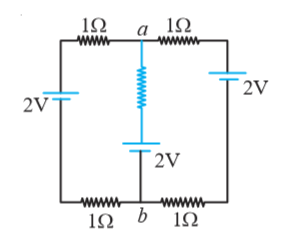 A2.4VB2.8VC2VD3.2v
A2.4VB2.8VC2VD3.2v - Question 2 - Select One
For the circuit given in figure, find the potential difference between points a and b.
 A2.4VB6VC10VD4.8V
A2.4VB6VC10VD4.8V - Question 3 - Select One
In the circuit shown in figure-3.331, the potential difference between points A and Bis :
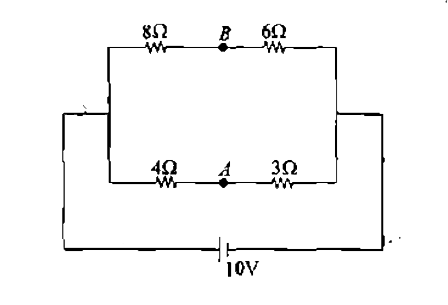 A207VB407VC107VDZero
A207VB407VC107VDZero
In the circuit shown in figure -3.113 Find potential difference between the point A and B and the currents though each branch.
 View Solution
View SolutionThere is a electric circuit as shown in the figure. Find potential difference between points a and b.
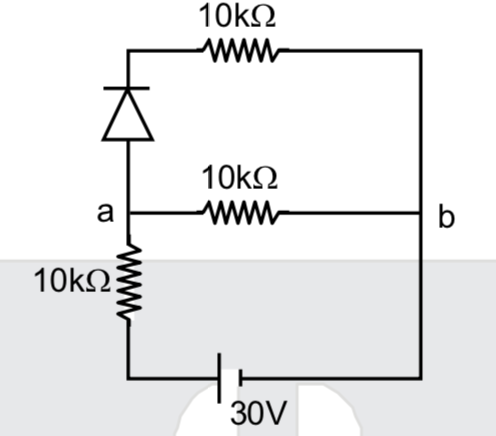 View Solution
View SolutionIn given circuit , the potential difference between points A and B is
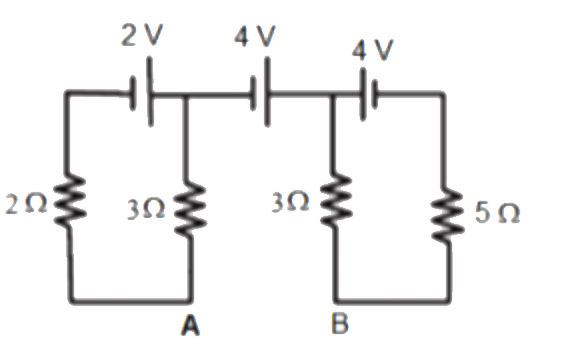 View Solution
View SolutionThe potential difference between points A and B from the figure is
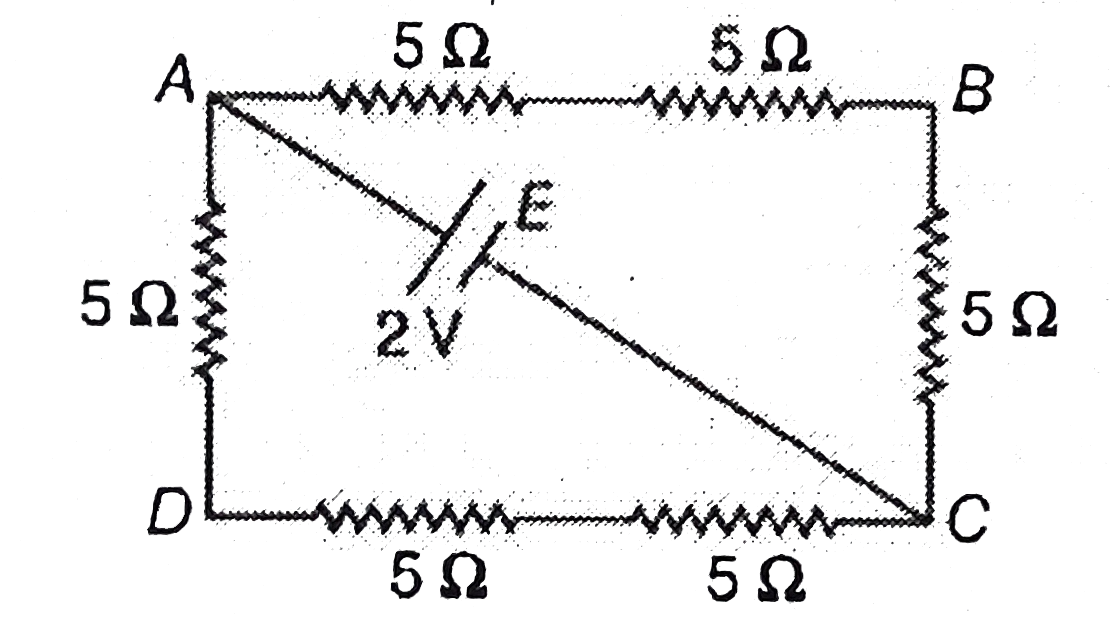 View Solution
View SolutionThe potential difference between points A and B adjoining figure is
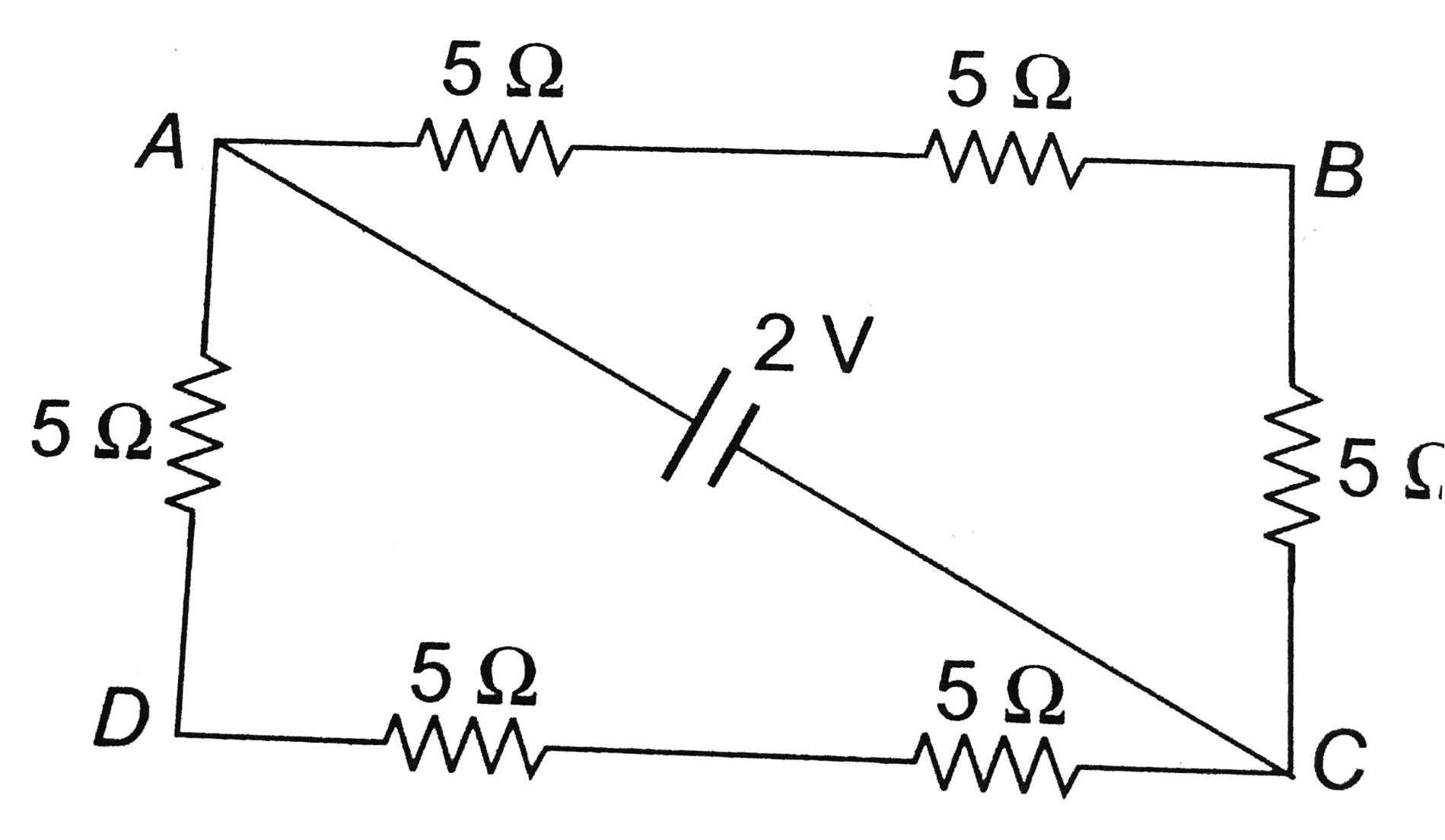 View Solution
View Solution


